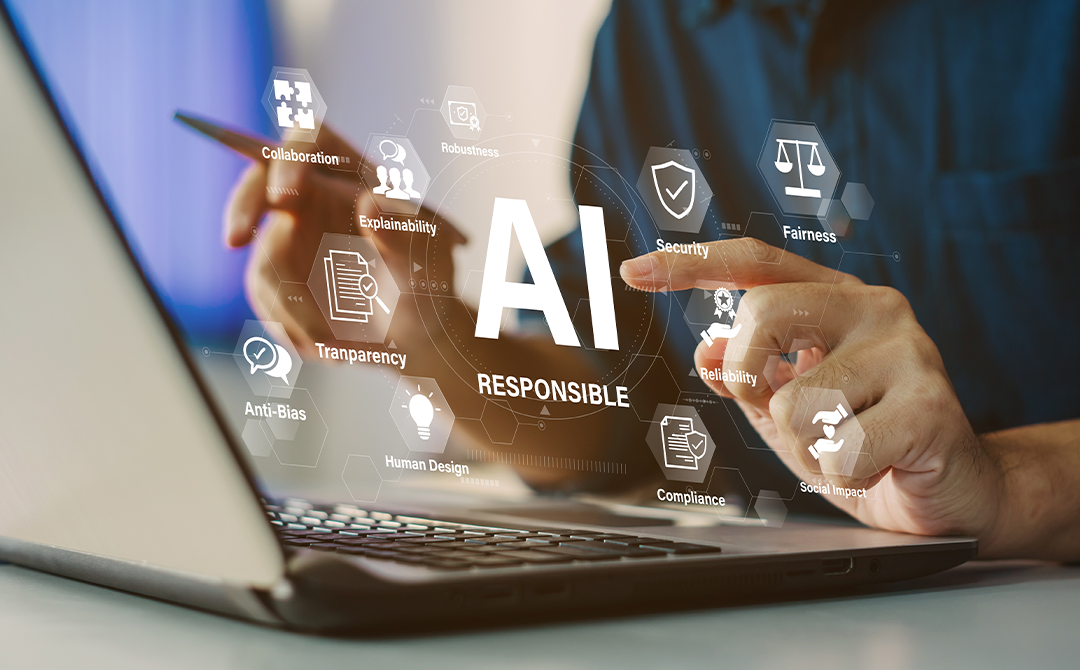
The US and APAC markets will see double-digit increases in AI and data science jobs from 2025 onwards, with competitive salaries and career mobility for top talent (Source: Deloitte). This shows how attractive a career this field is. If you want to be a data scientist, you have to be extremely well-prepared for the interviews. Whether it is for a junior analyst role or a senior data scientist position, the interviewee will test your technical skills, but also your ability to think critically and communicate effectively.
Traditional job interviews are mostly one-dimensional, but that’s not the case with data science interviews. They will look at the technical depth you possess in various related subjects, business acumen, and communication abilities (Source: ResearchGate). You will be asked to write Python code, interpret statistical results, and also explain your findings to a non-technical stakeholder. To be a successful data scientist, you must be good in all these areas.
This blog post will be a strategic guide for every aspiring data scientist. We have answered 20 of the most commonly asked data science interview questions, divided across five important categories. It is replete with explanations and examples to help you attend interviews with confidence.
What is Data Science?
Data Science is an interdisciplinary field that turns raw data, whether numbers, text, images, or other forms, into actionable insights. It combines statistics, computing, and domain expertise to collect, clean, and analyze data, identify patterns, build models, and make predictions that support smarter, data-driven decisions.
Categories of Data Science Interview Questions:
Data science interview questions test knowledge of machine learning algorithms, statistics, and data manipulation. Candidates are often asked about overfitting, correlation versus causation, or building models in Python. Behavioral questions focus on problem-solving, communication, and applying data science to achieve real business outcomes.
When attending a data science interview, you will find that they are structured to evaluate four core categories.
- Technical questions: It includes questions on programming, algorithms, statistics, programming, and SQL
- Conceptual questions: The questions in this category will test your understanding of machine learning, AI, and data science principles
- Practical and case-study questions: They involve scenario-based problems where you will design systems or analyze datasets for solving business challenges
- Behavioral and project-based questions: It helps interviewers understand how you handle real-world situations
Common Data Science Interview Questions Across Statistics, ML, Coding, SQL, and Business
A. Statistics & Probability
1. What is p-value in hypothesis testing?
P-value is a metric that determines the statistical significance of an observed effect.
Example: Let’s say an eCommerce company wants to check the new homepage design’s possible conversion abilities, it runs an A/B test. If the p-value is 0.04, it means that there is only a 4% chance that the observed difference is due to random variation. Therefore, you conclude that layout B offers a significant change in conversions.
2. What is the Central Limit Theorem (CLT)? Explain its importance.
The CLT uses several randomly selected independent samples to predict the activity of a population.
Example: If you take the customer purchase amounts of a few samples, the results will often be skewed. Let’s consider a large sample of 100 customers, and calculate the mean purchase amount for each sample. The distribution sample will be bell-shaped (normal). It will help you estimate the average purchase amount for all customers.
3. What is the difference between Type I and Type II errors?
In a Type I error (false positive), a true null hypothesis is rejected. It is when you conclude an effect exists when it does not. Type 2 error (false negative) fails to reject a false null. Or, when you fail to detect an effect that actually exists.
Example (fraud detection in system misclassification):
- Type 1 error: Here, a legitimate error is flagged as fraudulent, thereby annoying a customer
- Type 2 error: In this, a fraudulent transaction is not flagged as an error
4. Explain Correlation vs. Causation.
Correlation is a statistical relationship between two random variables. Causation is a direct cause-and-effect relationship.
Example: During the summer, there might be an increase in the sales of air conditioners and that in crime rates. But one does not cause the other. There won’t be a decrease in crime rates if you ban the sale of air conditioners, because they are not the causal factor.
B. Machine Learning Concepts:
5. Differentiate between supervised, unsupervised, and reinforcement learning?
|
Learning Type |
Goal |
Data Type |
Common Algorithms |
Example |
|
Supervised |
It predicts an output based on labeled input data |
Labeled (input X and input Y) |
Regression, classification |
Predicting credit default risk |
|
Unsupervised |
Infers patterns from unlabeled input data |
Unlabeled (input X only) |
Clustering, dimensionality reduction |
Segmenting movies into genres based on viewer ratings |
|
Reinforcement |
Learn to make decisions by performing actions in an environment to gain maximum reward |
Agent, environment, actions, rewards |
Q-Learning, Deep Q-networks |
Self-driving cars adjusting based on road conditions |
6. What is overfitting? How to prevent it?
It occurs when the model learns irrelevant details from the training data, resulting in poor performance on new data. It is likely to perform poorly on new data due to complexity. It can be prevented using cross-validation, regularization (L1/L2), dropout for neural nets, and using simpler models.
Example: A classic example of overfitting is a sales forecast model. It might predict perfectly on historical records, but fails when there are unforeseen changes in market trends.
7. Explain precision vs. recall.
Precision: In all the models that were predicted as positive, how many were actually positive?
Recall: In the instances that were identified as positive, how many of them did the model correctly identify?
Examples:
- Disease screening: When there is a high recall, it ensures that most sick people are detected, but it may reduce precision
- Loan default prediction: Precision ensures that only a few good customers are wrongly flagged
8. How Does a Decision Tree Work? What Are Its Pros and Cons?
In a decision tree, every internal node acts like a question or test, based on a specific feature. Each branch represents the outcome of the test. Each leaf node represents a final decision.
|
Pros |
|
|
Cons |
|
Examples:
- Customer churn prediction: Branching on tenure, complaints, and usage
- Loan risk scoring: Splitting by income, credit history, and employment
- Product recommendations: Splitting by demographics and purchase frequency
C. Programming & Algorithms
9. How do you handle missing values in a dataset?
The strategy to handle missing values depends on the nature and proportion of the missing data. Some of the strategies include deletion (if there are only a few), imputation (mean/median/mode). There are advanced methods like KNN.
Example: If you take the case of a customer demographic dataset, imputing the missing age values with the median may preserve overall distribution.
10. Write a Python snippet to count the frequency of words in a text.
Let’s look at the above Python data science interview question and write the code accordingly.
from collections import Counter
text = "data science interviews prepare data skills"
words = text.split()
frequency = Counter(words)
print(frequency)
11. Explain the time complexity of common data structures:
The time complexity metric describes how the execution time of an algorithm changes relative to the size of the input data. It is expressed using the Big O notation, which describes the upper bound of the growth rate.
In simple words, the time complexity is how long a program takes to process a given input.
12. How do you implement cross-validation (CV) in model training?
The CV technique checks how well a machine learning model performs on unfamiliar data, and reduces the risk of overfitting. The K-fold cross-validation is the most common method where the data is split into k folds, the model is trained and tested k times, each time using a different fold as the test set and the rest as the training set.
Example: Let’s say you have 100 data points to train a model. If you were to train on 100 but test on none, you wouldn’t know how the model works on new data. But if you train on 80 and test on 20 just once, the result will depend on the 20 you picked. This is where cross-validation comes in.
D. Data Wrangling & SQL
13. Write an SQL query to find the second-highest salary.
Sql:
SELECT MAX(salary) AS SecondHighestSalary
FROM employees
WHERE salary < (SELECT MAX(salary) FROM employees);
14. What is the difference between INNER JOIN, LEFT JOIN, RIGHT JOIN, and FULL JOIN?
- INNER JOIN: It combines rows from two or more tables based on a related column
- LEFT JOIN: All left table rows, matching from the right
- RIGHT JOIN: All right table rows, matching from the left
- FULL JOIN: All records when there’s a match in either table
Example: Joining sales and customer tables.
15. How do you normalize data and why?
It’s a feature scaling technique that transforms data into a standard range. This preprocessing method resizes the range of feature values to a specific scale, usually between 0 and 1.
Example: Imagine that you have a dataset with Age (range 0-100) and Annual Income (range 30,000-200,000). The model might wrongly interpret income as more important since its values are larger. You put them on the same field when you normalize both to a range like 0-1.
16. How to differentiate between structured and unstructured data?
|
Structured Data |
Unstructured Data |
|
It is highly organized, follows a predefined schema or model. They are stored in databases and are easy to enter, query, and analyze. |
It does not have a predefined data model, and makes up the majority of data in the world. |
|
Example: SQL databases of customer transactions, CSV files, and Excel sales tables. |
Example: Textual customer reviews, social media photos, audio recordings from support calls, and security camera video feed. |
E. Behavioral Questions
17. Share an incident when your business analysis resulted in changes by the management.
The purpose of this question is to test your impact on the organization because of your analysis and storytelling ability. Use the STAR (Situation, Task, Action, Result) method when the answers require storytelling.
STAR method example:
- Situation: Despite a substantial marketing budget, the ROI was unclear, especially for the email campaign segment, which consumed 20% of the budget
- Task: I was asked to identify the email segments that were not financially viable, and recommend a strategy that helps optimize spending
- Action: I built a Customer Lifetime Value (CLV) model that’s specific to the email channel. I also did cluster analysis and identified a segment of customers who had barely opened any of our emails in the past 12 months
- Results: Based on my findings, we showed that if we remove these 30,000 dormant users, the savings would be upwards of $3,000
18. How will you explain a complex model to a non-technical stakeholder?
This tests your ability to convert a complex technical journey into business value. Avoid jargon when explaining a complex model to a non-technical stakeholder. Leverage analogies and focus on business logic.
Example: The term logistic regression for predicting campaign success could be better
explained as: “it helps us identify which customers are more likely to respond, so we can target more effectively.”
19. Share with us about a life-changing dataset you worked on?
Walk them through a challenge you faced recently at your work while handling datasets, and share the approach that you used to solve it.
I had a messy healthcare dataset that had missing values and used inconsistent formats. I used the techniques of data profiling, imputation, and validation to clean it.
20. How do you prioritize multiple data requests?
When there are multiple data requests, prioritization should be based on business value, effort involved, and the feasibility of options. Tasks that are of high value and low effort must be prioritized first.
Example: Let’s say the marketing team requests campaign insights while the operations team needs real-time reporting. Prioritize tasks that have a direct impact on revenue.
Tips to Answer Data Scientist Interview Questions
- Thoroughly learn the concepts of probability, linear algebra, and core statistics. You should be able to figure out the “why” behind every ML algorithm
- Use platforms like LeetCode and HackerRank. Understand data manipulation and analysis in Python (Pandas, NumPy) and SQL
- It is a constantly changing field (Source: Tredence). Therefore, stay updated with trends such as LLMs, MLOps, and responsible AI
- Use the STAR method and prepare at least 3-5 stories that showcase your technical skills and business acumen
- Take the help of your peers, attend bootcamps, and do mock interviews with often-asked questions in data science interviews (Source: Tredence)
Tredence Academy of Learning: Preparing for Data Science Interview Questions
Data science interview questions can be daunting because academic theory and the practical demands of a workspace are different. This is why structured learning programs, like the ones offered by the Tredence Academy of Learning (TAL), play a pivotal part.
TAL helps aspiring data scientists by focusing on:
- You will get to work on projects that mirror actual business problems, from data cleaning and feature engineering to model deployment, thereby improving your portfolio (Source: Tredence)
- You will get to learn how to deconstruct business problems, formulate data-driven hypotheses, and get to design efficient solutions, just like how it works in a real interview
- There will be opportunities to participate in technical and behavioral interviews conducted by industry leaders, and get critical feedback
The approach offered by TAL puts you in a position where you are theoretically sound, and also practiced and confident. TAL will help you shine, right from the first question to the last.
Conclusion:
Landing a data science job requires a mastery of technical acumen and business understanding. The 20 questions outlined in this blog are popular among interviewers and will also show how you can handle real-world data science challenges. To be good at data science interviews, you must be a mix of several things: a brilliant statistician, a proficient coder, a problem-solver, a communicator, and a strategic thinker.
To differentiate yourself as a worthy candidate, you need to prepare using a structured and practitioner-led training, like the one offered by Tredence Academy of Learning. With TAL’s curriculum that combines hands-on projects and case studies, you can show your value from the start.
FAQs:
1. How to prepare for data science interview questions for freshers in 2026?
Here are a few pointers to keep in mind:
- Understand the specifics of the job and the company you are applying for
- Go through their requirements, the skills you need for the role, and their products and services
- Think of how you can enhance the functionality of their offerings using your data science skills
- Research the competitors of the company you are interviewing for, and come up with ideas that can help them
2. Are behavioral questions in data science interviews important?
It’s extremely important since companies are not just hiring for your data science aptitude. The interviewees would also like to see if you would be the right fit for the organization’s culture and its values. How you work with others, delegate tasks, and communicate effectively will hold a lot of weightage too.
3. Is previous experience necessary to answer data science interview questions well?
No, you don’t need previous work experience to shine in data science interviews. You can showcase your data science prowess from the projects you have worked on. Use the STAR method to structure your answers.
4. What are the top technical skills required for a data scientist?
Top technical skills for a data scientist include programming in Python, R, or SQL, strong knowledge of statistics and machine learning, and expertise in data manipulation and visualization. Familiarity with big data tools, cloud platforms, and model deployment is also essential for turning data into actionable insights.
5. Do companies ask coding-heavy questions for data science roles?
It completely depends on the role for which you are interviewing. If you are applying for research-heavy or ML engineer positions, then you can expect a coding-heavy interview. Analyst-leaning positions will only check your SQL and data wrangling abilities.

AUTHOR - FOLLOW
Editorial Team
Tredence




